
by Molly Timmers, Marine Ecosystem Specialist, Joint Institute for Marine and Atmospheric Researc
August 1, 2010
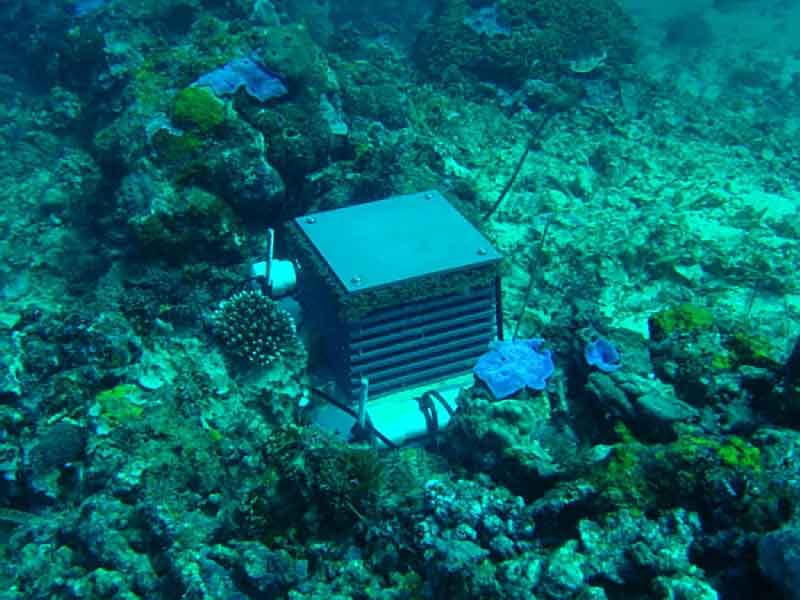
An ARMS unit installed on the seafloor. The design consists of alternating four open and four semi-closed layers constructed with 23-centimeter by 23-centimeter gray, type 1 PVC plates. A plastic pond filter mesh and a final plate top these 8 layers and together as a unit they are attached to a 35-centimeter by 45-centimeter base plate. Different creatures recruit to the different layers of the device. Image courtesy of the NOAA Office of Ocean Exploration and Research, INDEX-SATAL 2010. Download image (jpg, 44 KB).
While NOAA Ship Okeanos Explorer continues to map and examine the undersea environment with a focus on the deeper waters of the Sangihe Talaud region, the Indonesian Research Vessel Baruna Jaya IV continues to conduct complementary operations: mapping shallower areas of the seafloor and assessing marine habitats using a variety of technologies. Read on to learn more about some of the work being conducted from Baruna Jaya IV as part of the INDEX-SATAL 2010 expedition.
As I entered the lounge my first morning on the Baruna Jaya IV, I heard, “Selamat pagi, Molly. Apakah kamu tidur dengan nyenyak? Apakah kamu mau makan?” After a series of gestures and broken English, I gathered the translation to be, “Good morning, Molly. Sleep well? Would you like something to eat?”
I have been aboard the Baruna Jaya IV 10 days, and although I now recognize this morning greeting and a few other phrases, I am tongue tied much of the time, wishing that I could speak Indonesian and communicate effectively with everyone on board. But I can’t, so I have to depend upon those who know some English to translate announcements over the intercom, to explain questions or comments directed towards me, and to keep me posted on the daily operations.
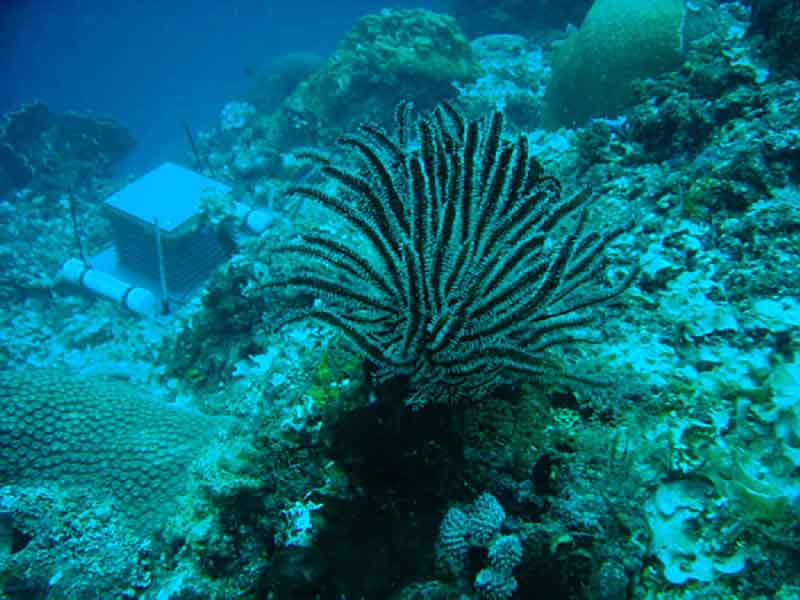
ARMS are long-term collecting devices developed to mimic the structural complexity of coral reef habitats and to attract colonizing invertebrates and algae. They were developed as a standard and systematic method to investigate and monitor the diversity of the lesser known reef organisms. Image courtesy of the NOAA Office of Ocean Exploration and Research, INDEX-SATAL 2010. Download image (jpg, 44 KB).
Operations vary every day on this ship. At any given point in time, we may be conducting a CTD cast, a plankton tow, a deep or shallow water trawl, ADCP (Acoustic Doppler Current Profile) measurements, or bathymetric surveys. We even conduct diving operations which is why myself and Russell Reardon have been invited to join the mission of the Baruna Jaya IV.
The diving mission on this cruise is to install Autonomous Reef Monitoring Structures (ARMS) in the Sangihe Talaud region. ARMS are long-term collecting devices developed to mimic the structural complexity of coral reef habitats and to attract colonizing invertebrates and algae. They were developed by the Coral Reef Ecosystem Division of NOAA’s Pacific Island Fisheries Science Center in conjunction with the Census of Coral Reefs Project (CReefs) of the Census of Marine Life (CoML) as a standard and systematic method to investigate and monitor the diversity of the lesser-known reef organisms.
The ARMS design consists of alternating 4 open and 4 semi-closed layers constructed with 23-centimeter by 23-centimeter gray, type 1 PVC plates. A plastic pond filter mesh and a final plate top these 8 layers and together as a unit they are attached to a 35-centimeter by 45-centimeter base plate. Organisms such as polychaetes, sipunculids, hemichordates, and even octopi recruit to the mesh layer while sessile organisms such as sponges, bryozoans, bivalves, crustose coralline algae, and tunicates recruit to the four open layers. The four semi-closed layers attract cryptic motile fauna such as galatheid and xanthid crabs, alpheid shrimp, ophuroids, and nudibranchs. On this trip, we installed ARMS along the coast of Sangihe Island.
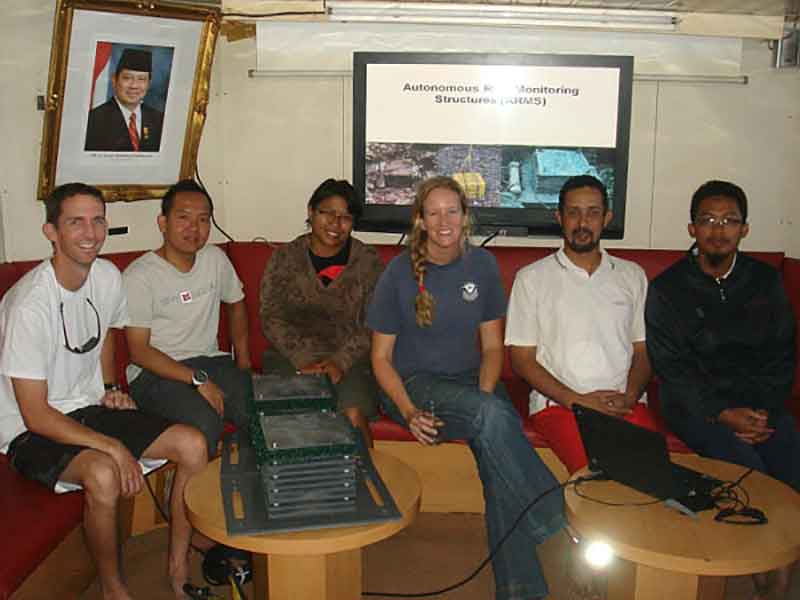
The ARMS deployment team (left to right): Russell Reardon (NOAA, CRED), Andria Utama (BRKP), Puspitaningsih Sutrisno (ITB), Molly Timmers (NOAA CRED), Ali Alkatiri (BPPT), and Ikhsan Wahyono (BPPT). Image courtesy of the NOAA Office of Ocean Exploration and Research, INDEX-SATAL 2010. Download image (jpg, 30 KB).
Although Sangihe Island is inhabited, few people dive using SCUBA, and the only facility that contains any diving equipment is the Indonesian Navy base. Thus, before we conducted our diving operations, we met with a Navy representative and one of their divers. They showed us the reef locations on the chart and where currents or visibility could impact operations. Based on their suggestions, we choose two sites, one at the tip of Tahuna Harbor and the other one along the coast heading south of the harbor. With the general area of the sites chosen, we prepared our gear and launched the small boats.
Due to its volcanic origin, the reefs along Sangihe are not flat. They slope and drop off fairly rapidly from 4 meters to 20 meters. There was some initial finessing trying to find a secure and semi-flat area around 15 meters for the ARMS. At each site, we installed three ARMS on the seafloor by pounding stakes into the reef using sledge hammers and then securing the ARMS unit to the stakes with zip ties. We also attached two seven-pound weights to each ARMS to help keep the unit in position during heavy currents or wave surge. These ARMS will remain on the seafloor until the next time the Baruna Jaya IV visits these waters in one to two years.
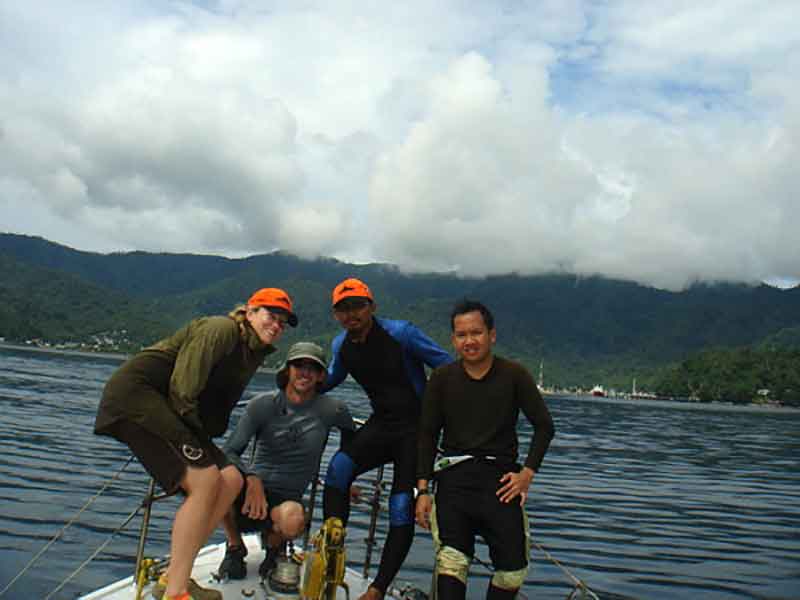
The diving mission aboard Baruna Jaya IV during the INDEX-SATAL 2010 expedition is to install Autonomous Reef Monitoring Structures (ARMS) in the Sangihe Talaud region. ARMS were developed as a standard and systematic method to investigate and monitor the diversity of the lesser-known reef organisms. In this photo (left to right): Molly Timmers (CRED), Russell Reardon (CRED), Ikhsan Wahyono (BPPT), and Andria Utama (BRKP). Image courtesy of the NOAA Office of Ocean Exploration and Research, INDEX-SATAL 2010. Download image (jpg, 26 KB).
The six ARMS deployed along Sangihe Island are the first ones installed in Indonesian waters. They join the 400 ARMS that already exist in coral reefs across the globe. Indonesian Reefs are at the center of marine biodiversity known as the Coral Triangle and are the most biologically diverse reefs in the world. We felt it was important to include Indonesia’s biologically rich reefs for the global assessment of cryptic reef diversity and are thankful that the Indonesian government agreed and permitted us to join this expedition.
With all of the activities being conducted on board, it is doubtful that we will have another opportunity to install ARMS before the cruise ends. Our mission for being on board the Baruna Jaya IV was not only to install ARMS but to develop partnerships with local agencies and universities to continue ARMS installation in other areas across Indonesia.
Coral reefs are threatened by anthropogenic and environmental stressors such as climate change, over-harvesting, marine debris, introduction of invasive species, and coastal development. The broad dynamics of coral reef decline and recovery are poorly understood, and thus it is difficult to predict the long-term impacts of human activities on them. Without robust knowledge of coral reef biodiversity, detecting changes in reef assemblages and investigating causes of such change will be nearly impossible.
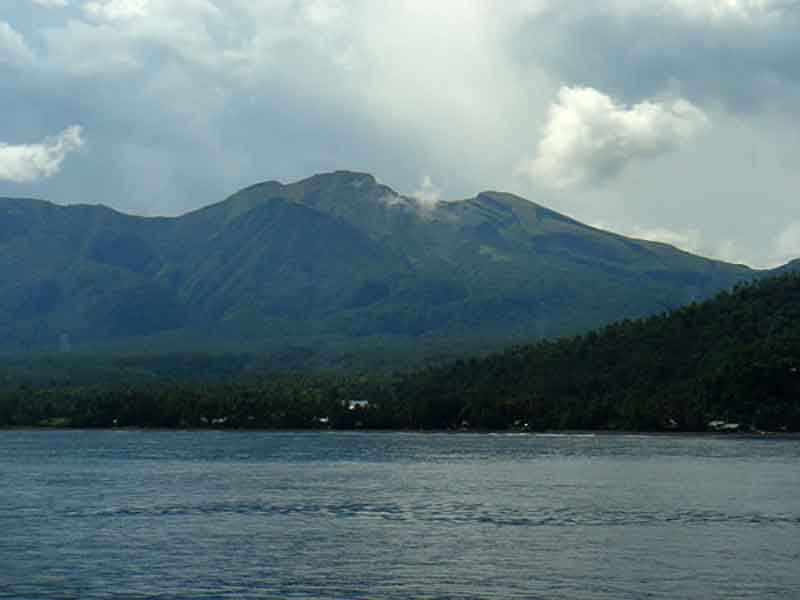
On this trip, we installed six ARMS units along the coast of Sangihe Island. These are the first ARMS units installed in Indonesian waters, and they join the 400 ARMS that already exist in coral reefs across the globe. Indonesian reefs are at the center of marine biodiversity known as the Coral Triangle and are the most biologically diverse reefs in the world. We felt it was important to include Indonesia’s biologically rich reefs for the global assessment of cryptic reef diversity and are thankful that the Indonesian government agreed and permitted us to join this expedition. Image courtesy of the NOAA Office of Ocean Exploration and Research, INDEX-SATAL 2010. Download image (jpg, 18 KB).
ARMS have become an established universal sampling method and protocol that provides the necessary baselines needed to make spatial and temporal comparisons of cryptic reef diversity. Knowing the biodiversity of this rich resource is a key component for effective management. Hopefully the legacy of ARMS deployments in Indonesian waters will continue with our new Indonesian partners and friends made during this joint U.S.–Indonesian INDEX-SATAL cruise.